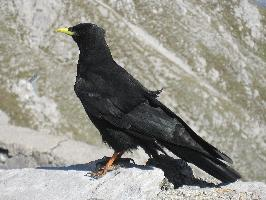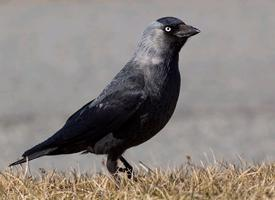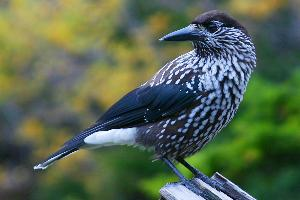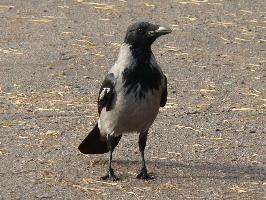
Poids et mesures
| Longueur | 50 cm |
|---|---|
| Envergure des ailes | 95 cm |
Description de l'animal
The Hooded Crow (Corvus cornix), also known as the Hoodie, is a fascinating bird species that belongs to the family Corvidae, which includes other members such as ravens, jays, and magpies. This bird is widely recognized for its distinctive appearance and high intelligence, sharing many characteristics with its close relative, the Carrion Crow (Corvus corone), from which it was once considered conspecific.Physical Description:
The Hooded Crow boasts a striking plumage that sets it apart from other corvids. Its body is a mix of grey and black, with the head, wings, tail, and throat displaying a deep, sooty black, while the rest of the body is cloaked in a contrasting light grey. This unique coloration pattern gives the bird its name, as it appears to be wearing a hood. The Hooded Crow measures approximately 48-52 cm in length, with a wingspan ranging from 98 to 105 cm. Both males and females display similar plumage, although males tend to be slightly larger in size.
Habitat and Distribution:
The Hooded Crow has a broad range that spans across Europe and Asia. Its habitat is remarkably diverse, encompassing both rural and urban environments. This bird is commonly found in open woodlands, farmlands, coastal areas, and even in the heart of bustling cities. Its adaptability to different environments is a testament to its intelligence and resourcefulness.
Behavior and Diet:
Hooded Crows are omnivores with a highly varied diet that includes insects, small mammals, grains, seeds, fruits, and carrion. They are known for their problem-solving skills and use of tools, which they employ to access food. In urban areas, they are often seen scavenging for food waste, demonstrating their ability to thrive in close proximity to humans.
These birds are highly social and are often observed in pairs or small groups. However, during the winter months, they may gather in larger flocks for foraging and roosting. The Hooded Crow is known for its loud and harsh "caw" sound, which is used for communication among individuals.
Reproduction:
The breeding season for Hooded Crows begins in early spring. They are monogamous birds, with pairs forming strong bonds that can last for several years. Nests are typically built in trees or on cliffs and are constructed from twigs, lined with hair, and other soft materials. The female lays between 3 to 5 eggs, which she incubates for about 18 to 20 days. Both parents are involved in feeding and protecting the young, which fledge approximately one month after hatching.
Conservation Status:
Currently, the Hooded Crow is classified as Least Concern by the International Union for Conservation of Nature (IUCN), indicating that it does not face any immediate threat of extinction. Its population is stable and widespread, thanks in part to its adaptability to various habitats and conditions.
In conclusion, the Hooded Crow is a remarkable bird, celebrated for its distinctive appearance, intelligence, and adaptability. Whether soaring above rural landscapes or navigating the urban jungle, this crow continues to captivate and intrigue those who encounter it.
Carte de répartition
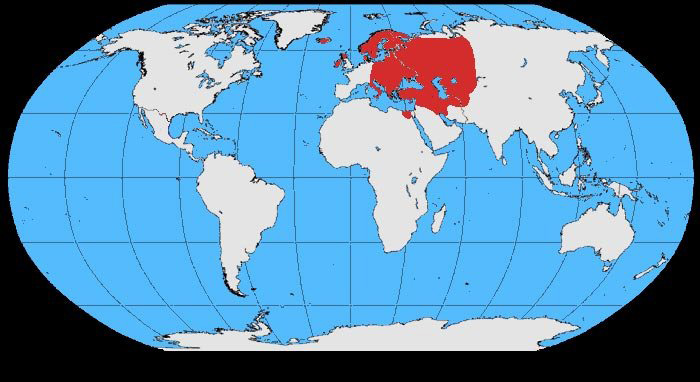
Animaux similaires
Nouvelles photos d'animaux
Top 10 des animaux
- Dolphin gull (Leucophaeus scoresbii)
- Diana monkey (Cercopithecus diana)
- Moustached guenon (Cercopithecus cephus)
- Galápagos tortoise (Geochelone nigra complex)
- Japanese macaque (Macaca fuscata)
- Russian tortoise (Testudo horsfieldii)
- Stone loach (Barbatula barbatula)
- Greek tortoise (Testudo graeca)
- Common flying dragon (Draco volans)
- Vendace (Coregonus albula)
